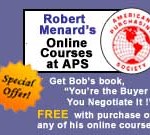What Does The Buyer Want, Anyway? Part II
Editor’s Note: This is Part II of a three part installment on how sellers can better identify and serve the buyer’s interests. Part I explored business from the buyer’s viewpoint. Part III examines specifics of using TCO to sell ‘Best Value’.
Eliminate wasteful confrontation over ‘lowest price’ by instructing the buyer in the most fundamental of all purchasing concepts, the Total Cost of Ownership (TCO). The TCO equals the sum of the costs of Quality, Service, Delivery, and Price. The definition of Best Value is the lowest TCO, not the lowest price.
TCO provides the foundation for the professional practice of purchasing. The buyer’s negotiation plan, supplier qualification and evaluation systems, and performance measurements all built on it. Expertise in TCO promotes Sales to the ideal status of information resource to the customer.
Price is not the same as Cost
Price is just one element of cost, and merely an initial cost. Quality, Service, and Delivery can, and almost always do impact the TCO more significantly than does the Price. Communicate in the buyer’s TCO language. You would not dream of bursting into a presentation in medieval French to impress your Japanese customer, but have you ever launched into a “one-size-fits-all” sales techno-babble recitation? Buyers have heard it all too many times. From a psychological perspective, if we can speak their lingo, we not to be ahead of our competition, smarter, and more concerned with solving their problems.
Once you have the attention, and perhaps the admiration of the buying crowd, prioritize the elements of Cost, from the customer’s angle. All four elements of Cost have different weights. For instance, an aerospace customer may rate Quality as the most important Cost element, while a high tech company may cite Service, and a distribution firm may select Delivery as its most important element.
Metrics
This hardest part, by no coincidence, is the heart of the process. Help the buyer to identify objective metrics for measuring the impact of each Cost element. (See table in Part III for elaboration) This requires purchasing process knowledge, not glib sales speak. If the buyer has bought into the value of TCO, but does not know how to create a formal analysis, seize the moment! What could be better than your active participation in establishing the buyer’s cost evaluation rating for the supplier?
Recognize the two edges of this sword. It may expose your weaknesses, but you will know where to improve – or, at least, which tactics to take in revising our sales strategy. Correspondingly, this inquiry feathers our own nest too as we record, and later trot out, our market advantages in the customer’s most crucial Cost concerns such as JIT delivery for a distribution industry customer.
In Part III, we’ll apply a simplified version of a TCO to help close the sale.

